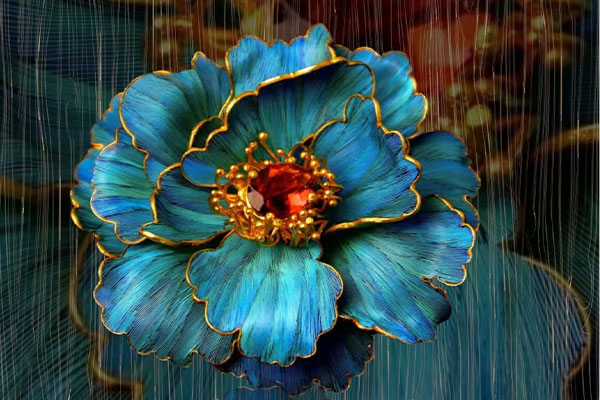Chinese Intangible Cultural Heritage - Kingfisher Feather Art (Diancui)
Introduction
Kingfisher feather art is a unique traditional Chinese craftsmanship used in gold and silver jewelry making, primarily featuring kingfisher feathers as decorative material. This technique involves meticulously adhering kingfisher feathers onto metal bases to create dazzling blue decorative effects. Renowned for their vibrant colors and lasting luster, diancui products were once representative of imperial jewelry and high-end crafts. In 2014, the art was included in China's National Intangible Cultural Heritage expansion list.
Historical Development
Origins and Evolution
- Han Dynasty: Emergence of earliest feather decoration prototypes
- Tang Dynasty: Technique matured, widely applied in jewelry making
- Ming-Qing Dynasties: Reached technical peak, becoming exclusive imperial craft
- Republican Era: Gradually declined with growing awareness of kingfisher conservation
Key Documentation
- Tiangong Kaiwu (Ming Dynasty, Song Yingxing): Records feather processing techniques
- Qing Palace Imperial Workshop Archives: Detailed accounts of imperial diancui production
Regional Characteristics
| School | Production Center | Features | Representative Works |
|---|---|---|---|
| Beijing Imperial | Beijing | Complex techniques, premium materials | Phoenix crowns, headdresses |
| Suzhou Diancui | Jiangsu | Exquisite craftsmanship, elegant patterns | Jewelry, ornaments |
| Guangzhou Diancui | Guangdong | Vibrant colors, innovative designs | Brooches, hairpins |
Cultural Significance
- Nature Worship: Embodies appreciation for avian natural beauty
- Artisan Wisdom: Demonstrates master craftsmen's skills
- Status Symbol: Once represented social hierarchy
- Aesthetic Value: Unique chromatic artistic expression
Production Process
Key Steps
- Base making (gold, silver, copper metals)
- Feather collection and processing
- Pattern design and cutting
- Feather adhesion
- Edge refinement
- Final polishing
Technical Features
- Unique Coloration: Feathers produce distinctive metallic blue
- Colorfast: Hues remain unchanged for centuries
- Technical Complexity: Requires exceptional patience and skill
Contemporary Preservation
- Material Innovation: Using dyed goose feathers as substitutes
- Technique Conservation: Establishing inheritor workshops
- Cultural Promotion: Hosting thematic exhibitions
- Education: Incorporating into arts and crafts curriculum
- Creative Development: Integrating with modern jewelry design
As a gem of traditional Chinese arts and crafts, kingfisher feather art not only showcases ancient artisans' extraordinary wisdom but also carries profound cultural meaning. With kingfisher protection as priority, this ancient craft is being revitalized through material innovation and technical inheritance.







